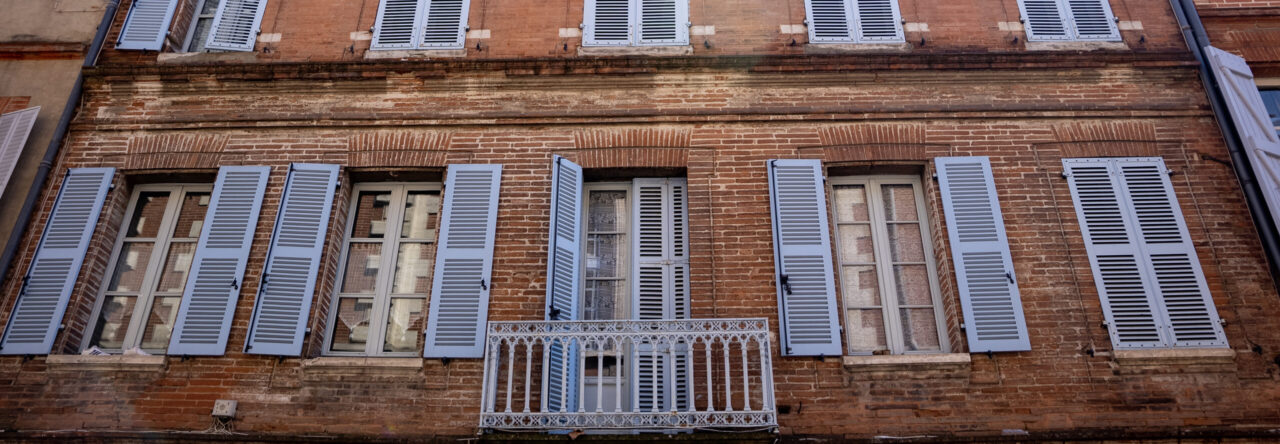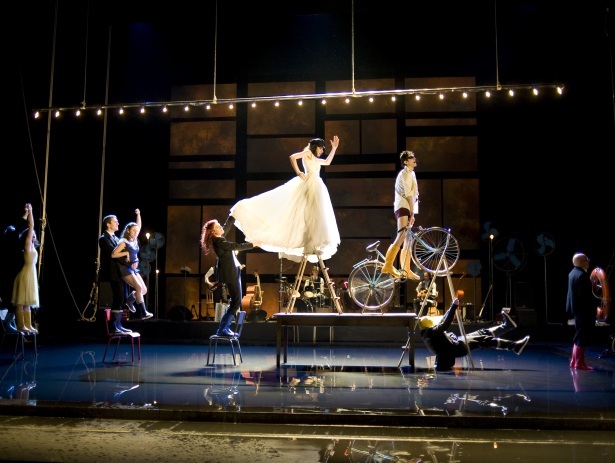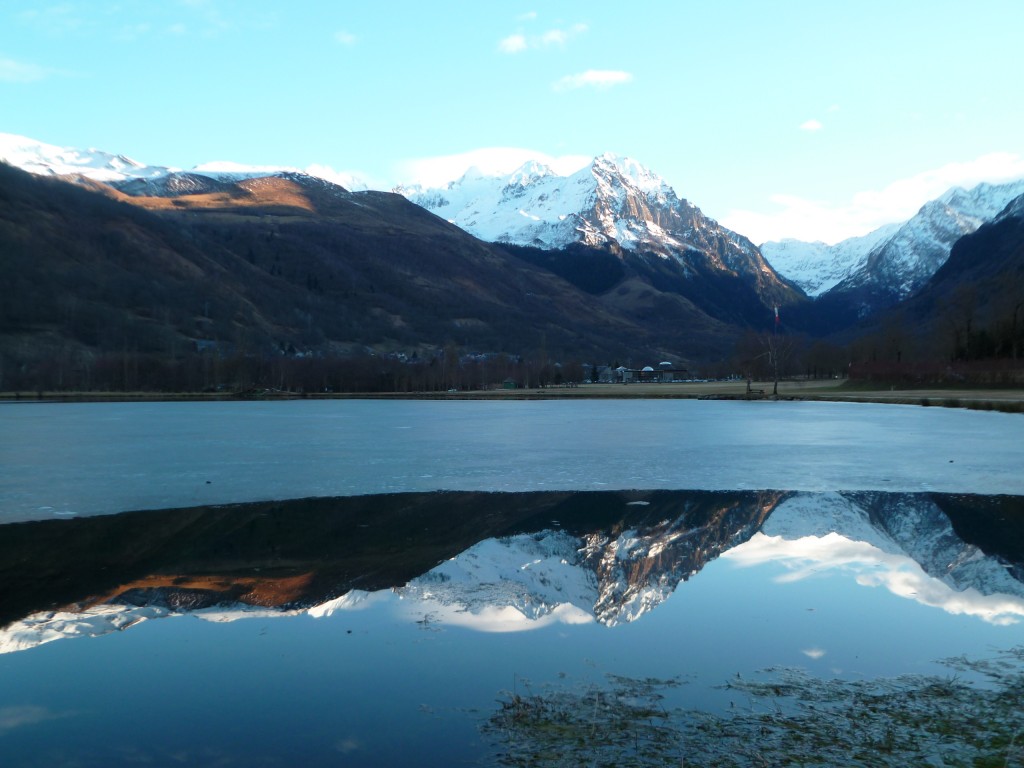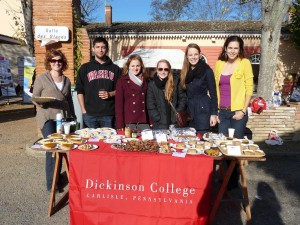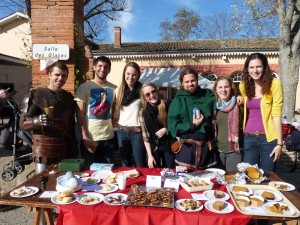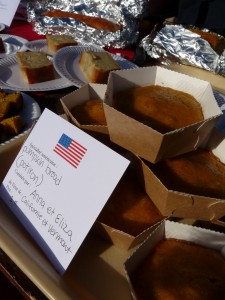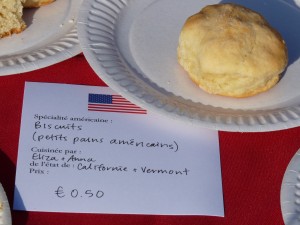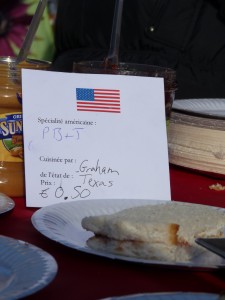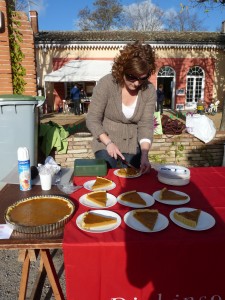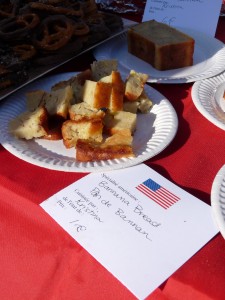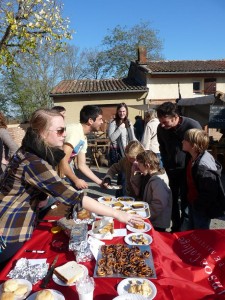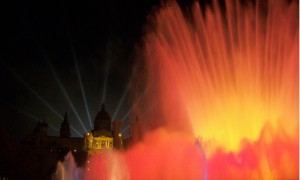Last month we spent 5 days in Paris and every student experienced it differently.
Anna and French tradition
We are all familiar with the timeless photo of the french man on his bike, wearing his béret and carrying his baguette. I had been told that this stereotype of France no longer existed but perhaps the style has just been modernized. Just outside of Notre Dame, I took this photo of this man on his bike with is hat. Times may have changed but I was happy to see that this stereotype had not completely dissapeared !
Take Me to the River : Thoughts on the Seine
All descriptions of ancient civilizations begin with the same observation: all of them were built by a river. Beyond the logical explanations for this necessary ingredient in the great recipe book of human development (Create Your Own Prehistoric Settlement! Just Add Water), the very concept of water holds an almost magical place in the human imagination. Think of old sailing maps: there be dragons drawn in the vast blank spaces of ocean. Of course, considering our history, this is especially true for rivers. From Joni Mitchell to Joseph Conrad, rivers are all at once responsible for supporting a stabilized kind of life in one location and representative of the limitless and terrifying unknown that is, to quote Pocahontas, just around the river bend.
And the Seine? Yes, it too possesses this magical, paradoxical quality of here and there, stability and movement, past, present and future. Yet the Seine is also unique, in that it is located in one of the most unique cities in the world: Paris. Walking along the banks of the Seine—a phrase impossible to utter without sounding like a hopeless romantic—can only be described like wandering into the 1951 film, An American in Paris. If you’ve seen it, you know why I’ve chosen this photograph of Gene Kelly and Leslie Caron dancing by the Seine. It’s a moment without words, all soft violins and enchanted fog. The existence of love and magic is not only probable but certain. That is the Seine. That is Paris.
Mai-Anh and the impressionists
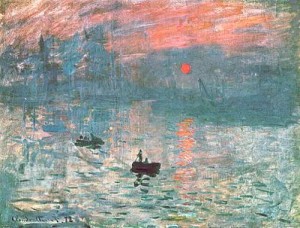 Even though almost everything about our voyage to Paris was magnificent, the thing that made the biggest impression on me was, what else?, the impressionists. I’d always appreciated their work, but after our visit to the Musée D’Orsay that first day where we passed by the floor with Degas, Monet, and Manet, I became completely mesmerized. In the following days, I preceded to visit the Musée Maumatton-Monet and l’Orangerie in an effort to see as many of their works as possible. There was something about the colors, the small brushstrokes, and the scenes of nature and water that really moved me somehow. With all my memories of Paris and of my time in France so far, the feeling of awe and serenity that I had when standing in front of the impressionist masterpieces will definitely be one that stays with me long after I return home.
Even though almost everything about our voyage to Paris was magnificent, the thing that made the biggest impression on me was, what else?, the impressionists. I’d always appreciated their work, but after our visit to the Musée D’Orsay that first day where we passed by the floor with Degas, Monet, and Manet, I became completely mesmerized. In the following days, I preceded to visit the Musée Maumatton-Monet and l’Orangerie in an effort to see as many of their works as possible. There was something about the colors, the small brushstrokes, and the scenes of nature and water that really moved me somehow. With all my memories of Paris and of my time in France so far, the feeling of awe and serenity that I had when standing in front of the impressionist masterpieces will definitely be one that stays with me long after I return home.
Melynda and the Eiffel Tower
Hereis a photo of the Eiffel Tower : one of my life dreams. When I arrivied at the Eiffel Tower, I was impressed. 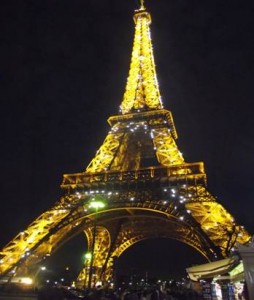 A tower that was built for the Universal Exposition of 1889 in France, it was ironically initially concidered ugly by many French people. However, aftercliming the 324 m tower, I had one of the most breathtaking views of my life : Paris at Sunset. Upon decending from the tower, it also did not hurt that I was welcomed to a light show of twinkling lights.
A tower that was built for the Universal Exposition of 1889 in France, it was ironically initially concidered ugly by many French people. However, aftercliming the 324 m tower, I had one of the most breathtaking views of my life : Paris at Sunset. Upon decending from the tower, it also did not hurt that I was welcomed to a light show of twinkling lights.
Beth and Ladurée
Among the many stores that line the Champs Elysees is the famous boutique Ladurée. The sweets shop is known not only for its desserts, but also for its elegant décor. It is what makes waiting in a line a pleasant experience, because it is always crowded at Ladurée. The desserts are expensive (twelve Euros for eight macaroons,) but they’re well worth the price. The macaroons are amazing – particularly the salted caramel!
Carina and Versailles
On one of the days of our trip to Paris, I and three other girls from the program went to Versailles. 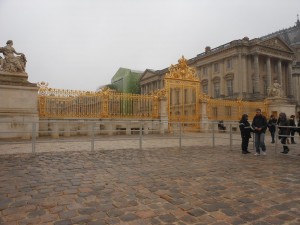 Seeing the palace for the first time, I was surprised by how much gold there was. If the people of France didn’t even have enough to eat in 1789, I can imagine how the King’s gold fence made the mad! We also explored the inside of the building. Since it wasn’t very nice out that day, there weren’t very many people at Versailles and we could take our time looking at each room. I spent a particularly long time in Marie Antoinette’s bedroom thinking about what her life must have been like before the revolution.
Seeing the palace for the first time, I was surprised by how much gold there was. If the people of France didn’t even have enough to eat in 1789, I can imagine how the King’s gold fence made the mad! We also explored the inside of the building. Since it wasn’t very nice out that day, there weren’t very many people at Versailles and we could take our time looking at each room. I spent a particularly long time in Marie Antoinette’s bedroom thinking about what her life must have been like before the revolution.
Megan and the “catacombes”
 The catacombs of Paris (the municipal ossuary), around 1.7 kilometers long and underground, are a system of ancient tunnels that contains the remains of more than 6 million people. First you descends the narrow stairwell into almost total darkness, where the only sound you can hear is the creepy gurgling noise of rushing water from a nearby aquaduct. When you reach to the entry to the catacombs, you see a sign that says ” Halt !, this is the Empire of Death !). After the sign begins a series of walls and halls of bones, and it’s hard not to be impressed by the sight of it. The catacombs of Paris have historical importance: Victor Hugo described the tunnel system in Les Misérables , and members of the French Resistance during the Wolrd War II used the elaborate labyrinth of halls to hide effectively.
The catacombs of Paris (the municipal ossuary), around 1.7 kilometers long and underground, are a system of ancient tunnels that contains the remains of more than 6 million people. First you descends the narrow stairwell into almost total darkness, where the only sound you can hear is the creepy gurgling noise of rushing water from a nearby aquaduct. When you reach to the entry to the catacombs, you see a sign that says ” Halt !, this is the Empire of Death !). After the sign begins a series of walls and halls of bones, and it’s hard not to be impressed by the sight of it. The catacombs of Paris have historical importance: Victor Hugo described the tunnel system in Les Misérables , and members of the French Resistance during the Wolrd War II used the elaborate labyrinth of halls to hide effectively.
Julia and the Centre Pompidou
 The Centre Pompidou is a cultural institution dedicated to modern and contemporary art. A huge building located in the 4th arrondissement of Paris, my first impression of the Centre Pompidou was that it looked completely out of place in the Beaubourg neighborhood. I also immediately noticed the original architecture of the building, which has placed the mechanical structures on the outside of the building. While the outside of the building is quite impressive, the inside is even better, as it is spacious and dynamic, and holds the national modern art museum, a major public library, temporary exhibitions, concert halls and a cinema.
The Centre Pompidou is a cultural institution dedicated to modern and contemporary art. A huge building located in the 4th arrondissement of Paris, my first impression of the Centre Pompidou was that it looked completely out of place in the Beaubourg neighborhood. I also immediately noticed the original architecture of the building, which has placed the mechanical structures on the outside of the building. While the outside of the building is quite impressive, the inside is even better, as it is spacious and dynamic, and holds the national modern art museum, a major public library, temporary exhibitions, concert halls and a cinema.
Ceci and the Jeu de Paume gallery
The Jeu de Paume, a gallery of modern and contemporary art in the Jardin des Tuileries, was a revelation for me. 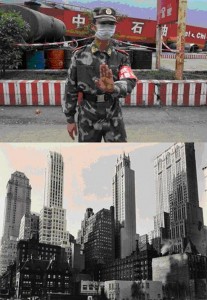 The two main exhibitions featured the photographic careers of two artists who seem quite different from one another: Berenice Abbott, an American, and China’s Ai Weiwei. Both spent the early part of their careers abroad. At the beginning of the 1920s, Abbott left for Paris, where she studied with Man Ray and photographed cultural celebrities the likes of James Joyce and John Cocteau. Weiwei spent his youth in New York City, where he recorded the Chinese avant-garde community in America during the 1980s. All the same, these two artists quickly learned that their home countries held the strongest attraction and for them. Abbott returned in 1929 to begin a project to photographically document the architectural richness of New York City, finding work during the great depression with the Works Progress Administration. Obligated to return to China to see his sick father, Weiwei stayed, and his art became more and more politically engaged in the face of his country’s humanitarian offenses. When I take a moment to think about them, I find that these two artists’ experiences share much in common. Like us, they left home to explore and to learn; and, though they didn’t expect it, they came back with an informed perspective and a renewed engagement with their own countries.
The two main exhibitions featured the photographic careers of two artists who seem quite different from one another: Berenice Abbott, an American, and China’s Ai Weiwei. Both spent the early part of their careers abroad. At the beginning of the 1920s, Abbott left for Paris, where she studied with Man Ray and photographed cultural celebrities the likes of James Joyce and John Cocteau. Weiwei spent his youth in New York City, where he recorded the Chinese avant-garde community in America during the 1980s. All the same, these two artists quickly learned that their home countries held the strongest attraction and for them. Abbott returned in 1929 to begin a project to photographically document the architectural richness of New York City, finding work during the great depression with the Works Progress Administration. Obligated to return to China to see his sick father, Weiwei stayed, and his art became more and more politically engaged in the face of his country’s humanitarian offenses. When I take a moment to think about them, I find that these two artists’ experiences share much in common. Like us, they left home to explore and to learn; and, though they didn’t expect it, they came back with an informed perspective and a renewed engagement with their own countries.
Ryan and La Villette
 La Villette is special for me because it is a tradition for my family to go to La Villette and watch an IMAX at La Geode or hang out in the park or look at the exibits in the museum. La Villette is situated along the Canal Saint Martin, which give the area a magnificant scenery unlike any other in Paris. TH large park is great for young people and when I am there with my dad, we ere very american toss around a football.
La Villette is special for me because it is a tradition for my family to go to La Villette and watch an IMAX at La Geode or hang out in the park or look at the exibits in the museum. La Villette is situated along the Canal Saint Martin, which give the area a magnificant scenery unlike any other in Paris. TH large park is great for young people and when I am there with my dad, we ere very american toss around a football.
